
Your tummy is upset, you’re feeling down, and that niggling anxiety over a looming work deadline is gathering steam. Could the common denominator be your GUT?
Helen Krag explores what is meant by ‘gut health’, how it impacts both our physical and mental wellbeing; and how the practice of yoga for gut health can contribute to improved health benefits.
‘Gut Health’ is increasingly the focus of scientific funding and research. Zoe, a company you may know from their collection and study of Covid data during the pandemic, conducts wide-ranging studies into the effects of the microbiome and the links to individual diet and metabolic health. Our gut, it seems, influences our digestive health. However, that’s not the full story.
“Yoga views the individual first and modern medicine treats the disease”.
Charlotte Watts
WHAT EXACTLY DO WE MEAN BY THE ‘GUT’?
The gut encompasses the entire gastrointenstinal (GI) tract from the mouth down to the anus – a channel which is approximately 9 metres long in adults. It includes the oesophagus, stomach, small intestine and large intestine. The microbiome is a complex collection of microorganisms within the gut. These help facilitate the digestion of food and control operation of the immune system, amongst other things.
The enteric nervous system (ENS) which resides in the gut is often called the ‘second brain’ by scientists and shares features with the brain in our head. It can act independently of the ‘head’ brain and communicates with the central nervous system (CNS) via a network of nerves, the most well-known one being the vagus nerve. Messages travel between the brain and the gut via the vagus nerve. This is why, for example, we may get ‘butterflies’ in our stomach when we are nervous or troubled and why we have a ‘gut feeling’ about certain situations.
The ENS, CNS and vagus nerve are all part of the gut-brain axis, the two-way communication system which is important for maintaining equilibrium in our bodies.
Read more about yoga for stress and anxiety in this complete guide
WHICH YOGA POSES ARE BEST FOR DIGESTION AND GUT HEALTH?
Poses which create pulsing, rocking, twisting, compressing and releasing of the abdominal fascia and organs will benefit the gut and digestion. Here is a selection:
1. Garland Pose (Malasana) Variation
This gentle squat aligns the organs in an optimal way to aid elimination.

How to do it:
- Squat with the feet as close together as possible. Aim to keep the heels on the floor, or alternatively support them on a folded mat or block.
- Separate the thighs slightly wider than the torso. On an exhale, lean the torso forward and between the thighs.
- Press the elbows against the inner knees, bringing the palms together. Against that action press the knees into the elbows. This will help lengthen the front torso.
- To go further and take the pose into a forward fold, press the inner thighs against the sides of the torso. Reach the arms forward, then take them out to the sides and notch the shins into your armpits. Press the finger-tips to the floor.
2. Cat / Cow Pose (Marjaryasana / Bitilasana)
This undulating spine pose alternately opens up the front and back of the body. Coordinate the movement with the breath for optimal effect.
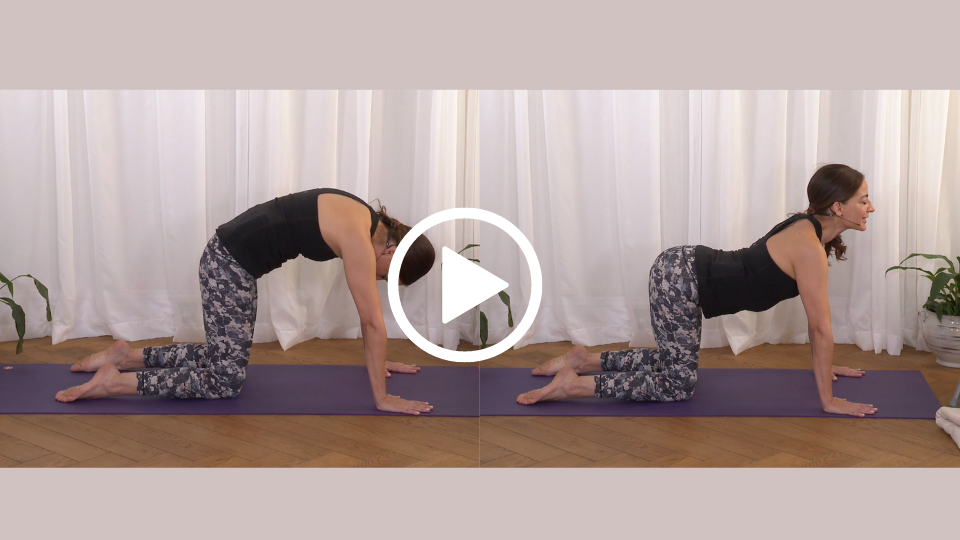
How to do it:
- Start in table-top with the hips directly over the knees; hands hip-width apart a little forward of the shoulders; fingers pointing to the front of the mat.
- Press down firmly through the hands.
- Cat: Exhale to round the spine towards the ceiling. Drop the crown of the head and the tailbone. Draw the abdomen towards the spine. Keeping the arms straight, push through the hands to broaden across the shoulder blades.
- Release to a neutral spine
- Cow: Inhale to arch the back: lower the belly, lift the sternum and the chin and broaden across the collar bones. Keep the back of the neck long. Engage the abdomen to access movement in the mid and upper back.
- Release and return to a neutral spine.
- Repeat several times.
3. Half Lord of the Fishes Pose (Ardha Matsyendrasana)
This spinal twist squeezes the lower part of the abdomen, stimulating the small and large intestine.
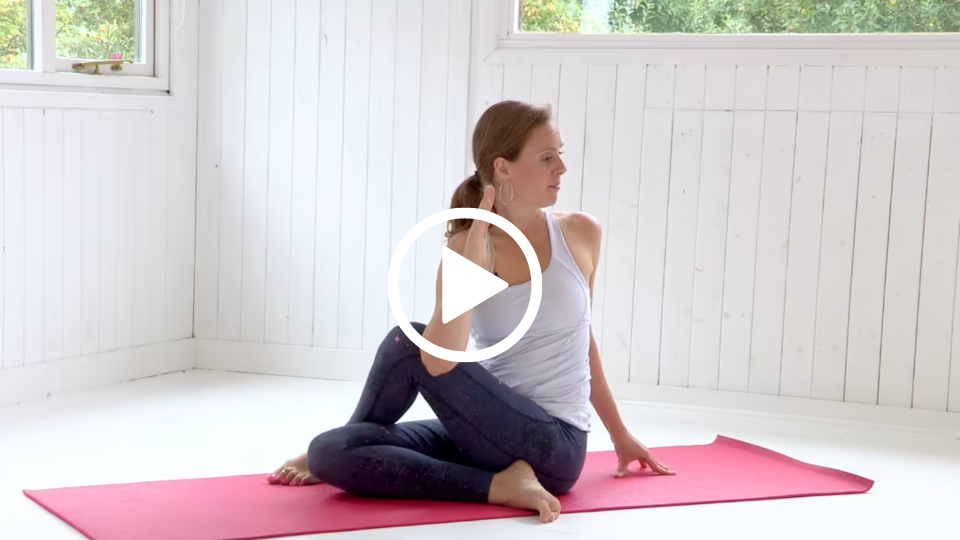
How to do it: Check out this seated twist tutorial with Andrew McGonigle.
4. Full Boat Pose (Paripuna Navasana)
This strong abdominal pose can provide relief from bloating in the abdomen due to gas.
How to do it: Check out this Navasana tutorial with Andrew McGonigle.
5. West Facing Seated Forward Fold (Paschimottanasana)
This seated forward fold can help tone the abdominal organs and aid digestion.
How to do it: Take a look at this tutorial with Andrew McGonigal.
6. Chair-Based Poses
Gabriella Espinosa shares 3 yoga poses to support digestion that you can do sitting on a chair.
WHAT IS THE IMPACT OF POOR GUT HEALTH?
“The road to health is paved with good intestines!”
Sherry A Rogers
When it goes wrong, things can get delicate! The issues we associate with poor digestion are often linked more widely to our gut health. These are symptoms such as gas, bloating, irritated bowel, constipation, diarrhoea and heartburn.
Primary and secondary effects of an unhealthy gut may also include fatigue, hormone fluctuations and weight changes. Associated impairment to the immune system can cause skin conditions and autoimmune problems such as thyroid issues.
The two-way nature of the gut-brain axis means that poor gut health may also affect the central nervous system which influences brain health. This in turn can impact on mental health. So, all in all our gut health has a significant influence on what else goes on in the body.
CAN STRESS CAUSE POOR GUT HEALTH?
Put quite simply, yes it can! Digestion operates in the parasympathetic (‘rest and digest’) mode of the nervous system. When we hold tension or experience stress, our sympathetic (‘fight or flight’) nervous system is stimulated to prepare the body for emergencies. The process of digestion is interrupted and de-prioritised. Find out more about how we hold stress and trauma in the gut, and why it is important to listen to our bodies.
Yoga for stress and anxiety is therefore a key component of yoga for gut health.
WHAT ELSE IMPACTS DIGESTIVE HEALTH?
Modern postural issues affect our gut health and digestion. Our GI tract is designed to operate vertically. If we spend hours on end sitting in chairs and hunching, this disrupts that vertical alignment and our food has a hard time making its way down the digestive channel.
The act of slumping in chairs also impacts on the diaphragm, which may be denied the space and freedom it needs to facilitate effective breathing. This can send stress messages to the brain and back to the gut, which further compounds digestive issues for reasons discussed above.
This simple exercise can help to straighten out the digestive tract and free the diaphragm:
- Lying down in Effortless Rest pose allows us to observe what’s going on in our body whilst releasing any tension we may hold (for example in the upper back, shoulders or jaw).
- With the hands on the belly, or perhaps one hand on the belly and the other on the mid-abdomen (diaphragm area), feel the rise of the belly and chest as you inhale air into the lungs and then the fall as you slowly exhale.
- Stay here several minutes and tune into the breath.
Disrupted sleep or too little sleep can affect your gut microbiome and contribute to poor gut health. Conversely, the gut microbiome affects how we sleep, so it works both ways. Yoga for sleep will help to address sleeplessness.
WHY PRACTISE YOGA FOR GUT HEALTH?
In her book Yoga Therapy for Digestive Health, Charlotte Watts talks about how occupying our bodies through yogic practices enables us to find expanse, connection and liberation, which can have profound effects on digestive function. This isn’t about finding a quick fix, although some yoga approaches may offer relief of symptoms. We need to listen inwardly to our bodies with kindness and attention. Yoga provides the means to do that.
“Yoga reveals that which was already there – the profound truth that we are whole”.
Charlotte Watts
Yoga for gut health can help us tune into our bodies, address postural issues through movement and enable us to breathe more easily and fully.
- Asana, or movement practice, moves into the fascia (the connective tissue which surrounds and holds our organs, blood vessels, nerve fibre and muscles in place). This creates space, fluidity and mobility in the body, including the abdominal cavity.
- When we stretch, twist and compress the GI tract and organs within it, this also supports digestive health.
- Awareness and control of the breath enables us to breathe more deeply into the diaphragm which is required for optimal digestive function.
- Meditation and mindful practices which direct us to focus within enable us to truly listen to what is going on in our bodies with non-judgement and kindness.
Read more about the relationship between digestion and movement.
WHAT YOGA FOR GUT HEALTH SEQUENCES CAN I PRACTISE?
Here are three fabulous yoga for gut health practices with Gabriella Espinosa, choose if you need to work gently, to energise your digestive system or if you need to rest and digest:
- Energising Yoga for Gut Health: Support Digestions – stoke up the digestive fire within.
- Yoga to Rest & Digest: The Vagus Nerve – Stimulate the vagus nerve and reset the nervous system.
Other gut health sequences to try:
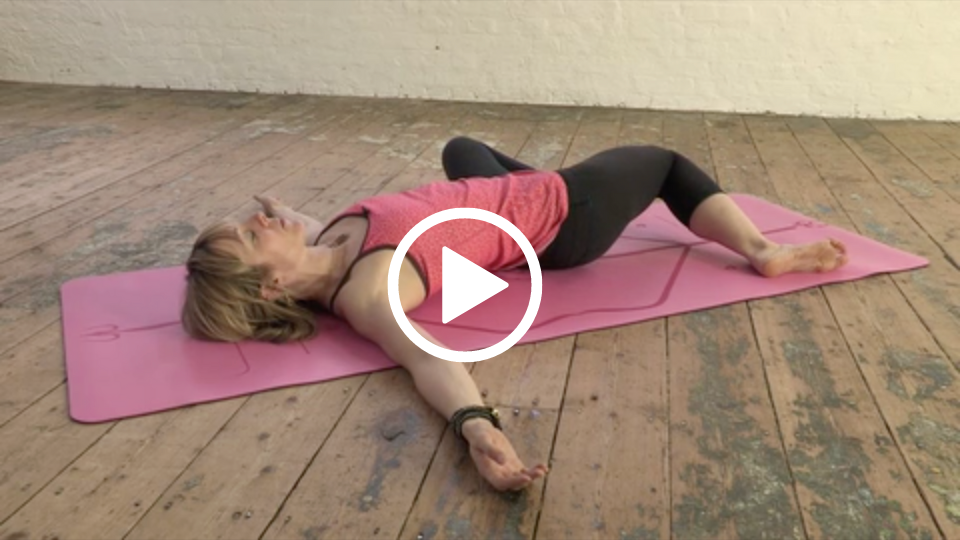
This sequence of twists will not only help you to unwind, but will also gently stimulate the digestive system. With Clare Beagley.
After Travel Rest & Digest with Zephyr Wildman. A class to unstick the uncomfortable feeling in your gut after travel and long journeys. Poses to assist digestion, help the stomach release any tightness and get some circulation back into the limbs.

HOW DO I STAY IN ‘REST AND DIGEST’ MODE IN MY NERVOUS SYSTEM?
“You must learn to achieve inner stillness, regardless of the outer circumstances. It is only when you can still the storm in your mind that you can unify mind, body, and emotions.”
Max Strom
Breathe!
Paying closer attention to the breath and taking steps to regulate and control breathing can help us to feel calmer and more relaxed. This in turn will enable the body to more readily access ‘rest and digest’.
This ‘Learn to Breathe’ tutorial from Max Strom provides clear instructions for the ‘ocean breath’ breathing pattern. It can be used at any time during the day, as well as during asana practice, to control and slow down your breathing rate.
Combine vinyasa flow with a focus on the Air element and breath. With Zephyr Wildman.
Explore more breath-work classes on MFML!
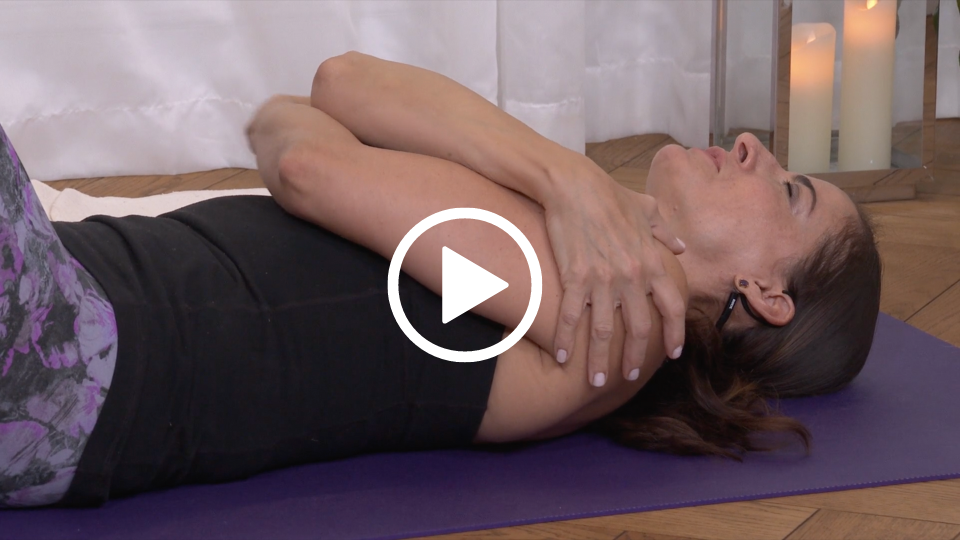
Restorative Yoga for Gut Health
Gentle restorative yoga practices will help to downregulate the nervous system and invoke the parasympathetic ‘rest and digest’ mode.
Try:
- Restorative Yoga for Gut Health: Find Calm with Gabriella features a self-massage and breath practice to relax the abdominal area.
- This ‘Rest and Digest’ Yin yoga session will help to calm and aid the digestive system at the end of the day. With Andrea Kwiatkowski.
WHAT KIND OF MINDFUL AND MEDITATION PRACTICES WILL BEST HELP ME?
Meditations which focus on body intelligence can help us to tune into what’s going on for us in the heart, the mind and the gut.
Lizzie Reumont explores body intelligence through this tutorial and meditation.
Being Embodied, also from Lizzie, can help you be receptive to what your body needs from you. This helps us to listen to, and follow our gut.
WHAT FURTHER READING IS RECOMMENDED ON YOGA FOR GUT HEALTH?
Yoga Therapy for Digestive Health, by Charlotte Watts blends Eastern and Western research to offer a comprehensive therapeutic approach via yoga for digestion. You can read about themes and topics from the book in Charlotte’s 5-part series on Digestive Health:
- Holding Stress and Trauma in the Gut
- How Modern Postural Issues Affect Digestion
- Digestion and Movement
- Unravelling Tension in the Midline
- Emotional Connections as Gut Feelings
WHAT ELSE?
What we eat and how we eat it has an important influence on our gut health. This is an enormous topic in its own right. Here are 3 top tips for how we can eat to support gut health:
- Consume a wide variety of plants, including vegetables, fruit, nuts pulses and wholegrains. These help feed the healthy bacteria in our gut.
- Include foods with live bacteria such as sauerkraut, kimchi, live yoghurt, kombucha, kefir and tempeh. These foods have a probiotic effect and contribute to a healthy gut microbiome.
- Where possible avoid highly processed foods. Studies show that these foods are associated with ‘bad’ or potentially harmful gut microbes.
If you would like to eat more plant-based foods, check out this meal plan for an easy plant-based week. At the time of writing the festive season is approaching. Here are 7 tips for avoiding tummy trouble over the holidays.
Read more in Yoga for Stress and Anxiety: A Complete Guide
TO CONCLUDE
The functions of our gut are intrinsically linked to other processes in our body. Yoga for gut health provides a means to explore what is going on in our own bodies and to show some love to this amazing channel which dominates the centre of our being!

Author: Helen Krag. Helen is a health and wellness enthusiast; observer of human behavioural change; yoga teacher trainee; passionate traveller; and lover of the outdoors.









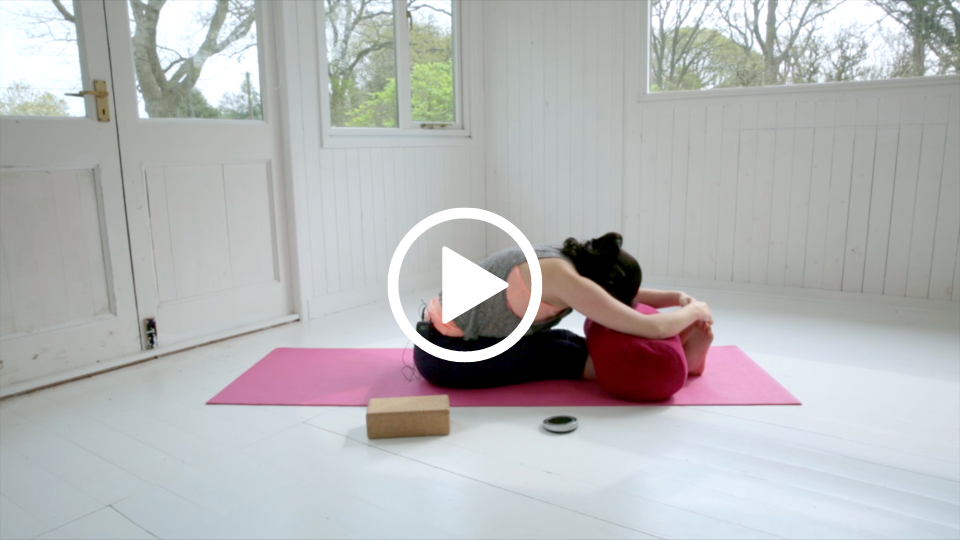

Leave a Reply